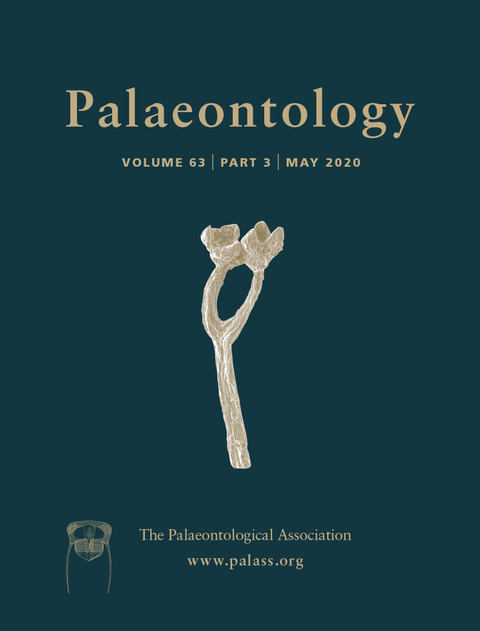Reg. Charity No. 1168330

There are few cases where numbers or types of possible phenotypes are known, although vast state spaces have been postulated. Rarely applied in this context, graph theory and topology enable enumeration of possible phenotypes and evolutionary transitions. Here, we generate polyhedral calyx graphs for the Late Cretaceous, stemless crinoids Marsupites testudinarius and Uintacrinus socialis (Uintacrinoidea Zittel) revealing structural similarities to carbon fullerene and fulleroid molecules (respectively). The U. socialis calyx incorporates numerous plates (e.g. graph vertices |V| ≥ 197), which are small, light, low‐density and have four to eight sides. Therefore, the corresponding number of possible plate arrangements (number of polyhedral graphs) is large (≫1 × 1014). Graph vertices representing plates with sides >6 introduce negative Gaussian curvature (surface saddle points) and topological instability, increasing buckling risk. However, observed numbers of vertices for Uintacrinus do not allow more stable pentaradial configurations. In contrast, the Marsupites calyx dual graph has 17 faces that are pentagonal or hexagonal. Therefore, it is structurally identical to a carbon fullerene, specifically C30‐D5h. Corresponding graph restrictions result in constraint to only three structural options (fullerene structures C30‐C2v 1, C30‐C2v 2 and C30‐D5h). Further restriction to pentaradial symmetry allows only one possibility: the Marsupites phenotype. This robust, stable topology is consistent with adaptation to predation pressures of the Mesozoic marine revolution. Consequently, the most plausible evolutionary pathway between unitacrinoid phenotypes was a mixed heterochronic trade‐off to fewer, larger calyx plates. Therefore, topological limitations radically constrained uintacrinoid skeletal possibilities but thereby aided evolution of a novel adaptive phenotype.